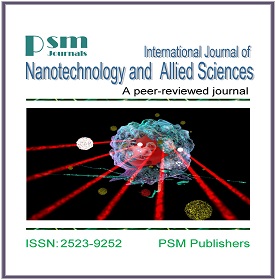PCR and Nanotechnology Unraveling Detection Problems of the Seed-borne Pathogen Cephalosporium maydis, the Causal Agent of Late Wilt Disease in Maize
Keywords:
Maize, seed-borne, late wilt, Cephalosporium maydis, nano-particles, PCR.Abstract
Late wilt disease of maize caused by the fungus Cephalosporium maydis is one of the most important fungal diseases in Egypt. The pathogen spreads through the remaining plant debris in soil and through apparently healthy seeds. Detection of the latent infection of C. maydis pathogen is of great importance step in disease management which commonly achieved by applying the standard seed health tests. The commonly used seed health tests in laboratories around the world are still lake of specificity, sensitivity, speed, simplicity, cost-effectiveness, and reliability of seed health methods. In the current study, Infection percentage of seed-borne C. maydis recorded 1.0 and 1.5% in 2015 and 2016, respectively from whole maize seed (Giza 2) when examined by the standard blotter method. Using the same detection method examining broken maize seeds of cv. Giza 2 gave 3.5 and 5% in 2015 and 2016, respectively. Maximum infection percentage obtained during the current study period was 6.5% which was gotten when Potato Dextrose Yeast Agar (PDYA) applied with broken maize seeds of the same cultivar. While the highest infection percentage recorded during the entire study was 11% which obtained from broken seeds of hybrid Sc 166 of season 2015 and incubated on PDYA. Relatively to other major fungi recorded, the deep freezing method used with whole seeds (Giza 2) gave the least records of C. maydis in 2015 and 2016; 0.0 and 1.2, respectively. On the other hand, PDYA method gave the highest record during the two successive years of investigation (18.2) obtained from 2016 broken seeds. PCR has many beneficial characteristics that make it highly applicable for detecting C. maydis from seeds. In PCR diagnosis study, the development of DNA extraction is one of the most important steps. These approaches include using Ag NPs and Fe NPs in DNA extraction method to enhance the quantity and purity of the DNA template for successful PCR assay.
Downloads
Published
How to Cite
Issue
Section
License
Copyright (c) 2019 PSM

This work is licensed under a Creative Commons Attribution-NonCommercial-NoDerivatives 4.0 International License.







